Lynx
The (original) Lynx version rewarded the player best for beating this difficult game. The scene with Chip and Melinda is animated, and we even get to see the E-Prom. No other version did that.

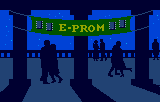
Images Software
In 1990, the game was ported by Images Software, a British developer, for U.S.Gold, a British publisher, mainly to platforms popular in the UK and Europe. Some of the ports were published by Epyx in the USA, but on the whole this was a UK/EU affair. The actual releases were in January 1991 BTW.
Amiga and Atari ST
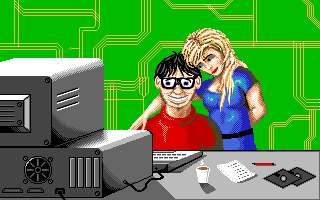
Melinda seems to be suffering under a bad case of hover hand, or maybe rather hover arm. Isn’t that supposed to be a guy phenomenon? The computer, on the other hand, is a fairly correct rendition of a Commodore PC:
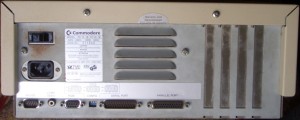
Back of a Commodore PC 20-III – Click to enlarge
Four expansion slots, check. Not used because everything essential is on the motherboard, check. Power unit fan above the serial and parallel ports, check. Keyboard plugs into side, check. It should be the other side, but nobody’s perfect.
Sinclair ZX Spectrum

This looks like an exact copy of the Amiga ending screen, minus the hover arm. The clothes are done quite well, far better than the rest, with good avoidance of attribute clash.
Commodore 64
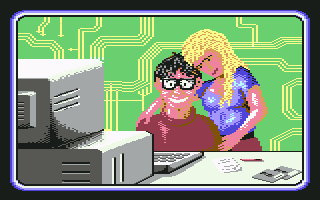
The computer is simplified, the coffee cup gone, Melinda’s pose is a bit different, the image does not fill the whole screen but has a border with rounded corners.
Amstrad CPC
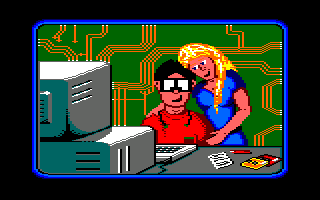
Minor details like the computer and the circuit pattern are the same as in the C64 ending screen, Melinda’s pose is the same, but otherwise, what improvements! Among the in-house Images versions, this ending screen wins hands down.
Audio Visual Magic
The DOS port was subcontracted to Audio Visual Magic, unfortunately no information is available about this company. Graphics are credited to Images Software, which is definitely not true for the ending screen (here’s the VGA version):
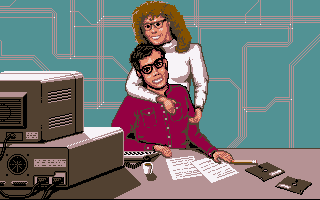
Interesting detail: On the back of the Epyx box, there are photographs probably meant to represent the protagonists of the game, though the text does not mention the back story at all:


Obviously these photographs were used as reference for the end screen art.
EGA
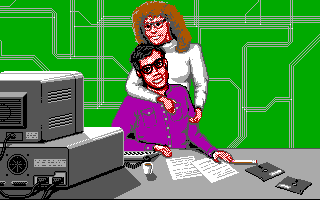
Why is Chip’s shirt purple in EGA? The dark red would have been a lot closer to the VGA image.
CGA

Even in CGA, the ending screen looks surprisingly good.
Windows
Microsoft’s Windows port eliminated the romance element altogether. The ending is completely different. First, the Chip sprite is enlarged till it fills the whole gameplay area, and does a little dance. Then we get a graphic…


…and this message:
Melinda herself offers Chip membership in the exclusive Bit Busters computer club, and gives him access to the club’s computer system. Chip is in heaven!
Not a word about the E-Prom.
Check for Yourself
There is a secret level called Special. It is usually accessed with the code DIGW, easy to traverse if you know what you have to do, and leads directly to the end screen. In the Atari ST version, the code is RGSK, but the level is buggy, Chip starts on an impassable tile and cannot be moved at all.



















